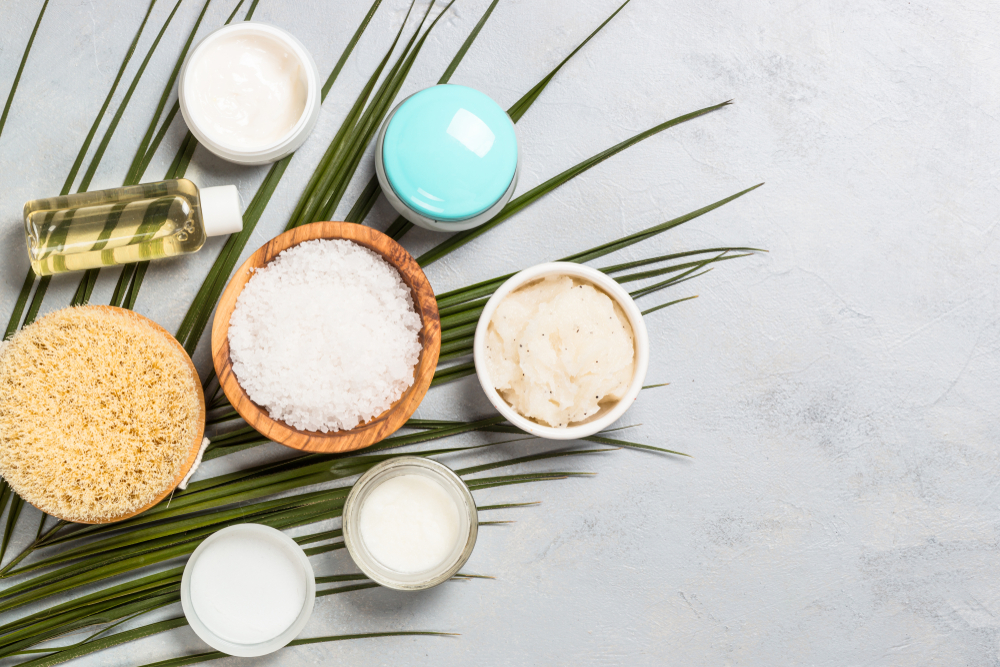
16 Mar Six TOXIC Ingredients in Everyday Beauty Products
There are so many cosmetic products out there clamouring to be “the fairest of them all”, but many of them are hiding a number of ugly secrets. We unmask six hidden nasties lurking in your beauty cabinet – what they are, what makes them so bad for you, which products you’ll typically find them in and how they are listed on product labels. Armed with this knowledge, you can ensure you choose beauty products that are free of yucky, potentially harmful ingredients like these.
1. Parabens
What they are: These preservatives are added to many beauty products in order to prevent the growth of bacteria, mould and yeast.
What makes them dangerous: Unfortunately, parabens have oestrogen-mimicking properties that make them hormonal disruptors, and so they are linked to an increased risk of hormonal imbalances, early puberty, breast cancer, male sterility and tumour growth.
Where they’re found: Makeup, body washes, antiperspirant deodorants, shampoo, face washes; even some foods and pharmaceutical products.
What they’re called: Look out for any mentions of Methyl, Butyl, Ethyl or Propyl on your product labels.
2. Toluene
What it is: A petrochemical (derived from petroleum or coal tar). Toluene is a powerful solvent that even can dissolve paint and paint thinner; it is used to give products like nail polish their optimum consistency.
What makes it dangerous: This nasty has also been linked to respiratory irritation, asthma, nausea and skin irritation.
Where it’s found: Nail lacquers, nail treatments, hair colours and hair bleaching products.
What it’s called: You might see toluene listed as benzene, toluol, phenylmethane or methylbenzene.
3. Propylene Glycol
What it is: An organic compound commonly used as a skin-conditioning agent.
What makes it dangerous: Propylene glycol is classified as a skin irritant and a skin penetrator. Even concentrations as low as 2% have been linked to skin conditions like dermatitis and hives. Exposure to PG has also been linked to kidney and liver problems.
Where it’s found: Moisturisers, sunscreen, makeup, conditioners, shampoo and hair sprays.
What it’s called: Propylene glycol is shortened to PEG.
4. Triclosan
What it is: An antimicrobial, antibacterial chemical.
What makes it dangerous: Triclosan bioaccumulates, meaning it builds up in tissue over time. It is a known endocrine disruptor, with especially detrimental effects on the thyroid and reproductive hormones. It’s also a skin irritant. The Environmental Protection Agency (EPA) registers Triclosan as a pesticide, posing risks to human health and environment.
Where it’s found: Toothpaste, antibacterial soaps and deodorants.
What it’s called: Triclosan is also commonly listed as Irgasan DP-300, Lexol 300, Ster-Zac or Cloxifenolum.
5. Sodium Lauryl Sulfate
What it is: A widely used surfactant and foaming agent.
What makes it dangerous: SLS is known to be an irritant to the eyes, skin and lungs. It also has the potential to interact and combine with other chemicals to form carcinogenic nitrosamines.
Where it’s found: In around 90% of personal care and cleaning products! Typically in foaming products like shampoos, soaps and body washes.
What it’s called: Also called SLS or SLES (Sodium Lauryl Ether Sulfate)
6. Phthalates
What they are: Chemicals used to enhance fragrances, to denature alcohol and promote the absorption of skincare products into the skin.
What makes them dangerous: Phthalates are soaked up into the bloodstream and stored in fat cells. These chemicals are extremely potent oestrogen mimics, making them strong hormonal disruptors. DEP, the most commonly used and highly concentrated phthalate in beauty products, has been linked to issues like infertility and birth defects; DEHP is classified as a probable carcinogen by the EPA.
Where they’re found: Phthalates are found in almost all fragrances; and manufacturers are allowed to list them under the name fragrance or parfum.
What they’re called: Dibutylphthalate (DBP, DEP, butyl ester), DEHP. Manufacturers are not required to list phthalates on product labels, and may be included under “parfum” or “fragrance”.
Don’t settle for beauty products that are anything less than pure, safe and healthy – browse our gorgeous selection of natural makeup and beauty goodies online, and treat yourself to a solution that lets all your inner beauty shine through!



Ellen Kent
Posted at 09:45h, 28 FebruaryThank you so much for this enlightening information. It has been shown over and over again that the natural world around us has been created to provide all that we need for optimum health and well-being. And when humans presume to impose man-made chemicals on our beautifully designed organism, there are always unwanted negative ill-effects.